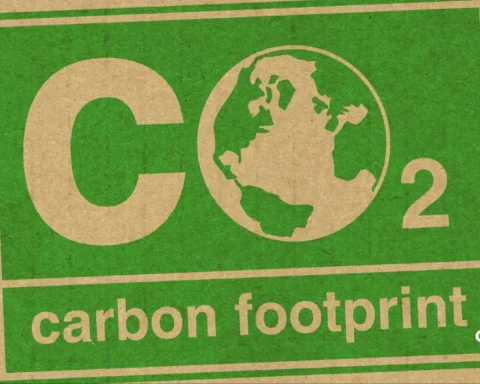In today’s warming world, the need for green innovation is more urgent than ever. As climate impacts grow stronger, many people are looking to artificial intelligence, renewable energy systems, and digital technologies to rethink how humanity powers the planet. But a deeper question remains: Can technology genuinely lead to large-scale decarbonization? What does this shift mean for the global Indian and Brown community, which faces both vulnerabilities and opportunities?
Table of Contents
Understanding Green Innovation
At its core, green innovation refers to technologies and systems that reduce environmental harm and improve efficiency. It includes advancements in renewable energy, low-carbon manufacturing, sustainable transportation, and climate-smart agriculture. These ideas are changing economies around the world. A helpful overview from the Institute of Sustainability Studies explains how these technologies are appearing across sectors. As AI becomes more integrated into these solutions, eco innovation has shifted from theory to real, measurable results.
The Role of AI in Accelerating Green Innovation
AI has emerged as a driving force of green innovation as it assists organisations to optimise their energy consumption, automate their resources, and better predict their emissions. AI enhances the stability of the renewable energy grids and promotes climate-friendly logistics with the help of machine-learning models and intelligent digital systems. According to a recent study, AI adoption, the development of renewable energy, and digital infrastructure will reduce CO2 emissions, in general. This synergy makes AI one of the key drivers of the green innovation environment, rather than a facilitating factor.

Why Eco Innovation Matters to the Global Indian/Brown Community
Green innovation does not exist as an abstract idea to the global Indian and Brown population. It has a direct impact on daily life, as in the soaring heat waves in Delhi, the rising sea levels that are threatening to wipe out Mumbai, Chennai, and other global hubs of coastal diaspora. Air pollution, water shortage, and irregular weather patterns disproportionately affect our community. This implies that eco innovation is both a source of protection and a source of growth: a source of protection against the escalating climate change effects and a source of growth as the renewable-energy employment, technology-driven sustainability positions, and green manufacturing sectors expand.
The families in India and the global Indian diaspora are the beneficiaries in case eco innovation is availed extensively. It can lower energy costs, enhance the quality of air, and generate new opportunities in entrepreneurship. However, it may disenfranchise people as well, in case the policies and investments are set towards the big corporations or prosperous countries. This renders it of vital importance that Indian communities across the globe promote the course of inclusiveness where green innovation can be accessible to families, small businesses, and new markets.
How Technology is Reshaping Sectors
Green innovation is changing the way power is produced, stored, and circulated across the energy systems. Emerging renewable technologies, such as solar and wind, are cheaper and more efficient and are supported by AI-based predictions and smart grids. These global changes are pointed out in a detailed article on the future of sustainable tech.
The same is taking place in the industry. Even heavy industries like steel and cement, which could previously not be decarbonized, are experimenting with green hydrogen, carbon-capture solutions, and low-emission production processes. A study conducted by the OECD describes the way countries are driving such eco-innovation policy and investment. Indian industries are also susceptible to these changes, which are impacting the work structures and supply chains of Pune, Toronto, and Dubai.
The green innovations are also noted to spur economic growth and reduce emissions on the global stage, as institutions such as the IMF note, where a policy framework and finance support them. But access remains uneven. The World Bank points out that a significant number of emerging markets do not have a chance to implement such technologies because of cost and infrastructural obstacles. In the case of the Indian and Brown global community, this implies that the transition has to be manoeuvred with sensitivity and advocacy.

The Challenges Ahead for Equitable Green Innovation
While green innovation offers the potential for a cleaner future, several challenges still exist. The costs of new technologies often remain higher than traditional options, which makes them less accessible for middle-class and working-class families. Technical skills and supportive policies vary from country to country, which makes it hard to scale these solutions. If this gap continues, wealthier regions may reap most of the benefits while countries like India, along with communities in developing economies, may fall behind.
Additionally, the pace of adoption is critical. Climate deadlines are approaching quickly, and eco innovation needs to grow rapidly to make a real difference. Without clear regulations, significant public funding, and international collaboration, these technologies cannot spread fast enough. This situation directly impacts workers and families whose jobs rely on industries that are changing.
What Does this Shift Mean for the Global Indian Community?
To Indians worldwide, whether in India or the global Indian community, green innovation presents the once-in-a-century chance to get ahead. We are a community with great global technology history, a high culture of entrepreneurship, big in engineering, climate tech, and academia. This places us not only in a better position to enjoy green innovation but also to influence it.
It may be the researchers of Indian origin creating new battery technology, it may be the founders of Silicon Valley climate-tech startups, or it may be the Bengaluru local innovators who created solar-powered microgrids, but the effects are global and intertwined. Green innovation can be in the form of clean air, health, and increased stable access to energy for families. It is a new career opportunity for the students. To companies, it has provided business and markets around the continents.
Conclusion
In the age of AI, eco-innovation is both a promise and a duty. Technology alone cannot reduce carbon emissions in the future. However, when combined with strong policies, investment, and community involvement, it can change our world. For the global Indian and Brown community, this transition provides an opportunity to lead, innovate, and make climate solutions available, affordable, and fair. Eco innovation can help reduce carbon emissions, but only if we develop it with intention, inclusion, and global support.

FAQs
How is AI helping reduce carbon emissions?
AI makes energy use more efficient, predicts demand patterns, cuts waste in industrial systems, and helps integrate renewable power smoothly into grids. Together, these abilities lower overall emissions.
Can technology alone solve the climate crisis?
No. Technology can help a lot, but real progress on climate change needs policy support, public involvement, investment, and cooperation across the globe. It’s a team effort, not just one solution.
How are industries adapting to the push for cleaner systems?
Many sectors are moving to cleaner fuels, efficient processes, AI-driven monitoring, and better waste management. The speed of this change varies, but industrial transformation is speeding up worldwide.









